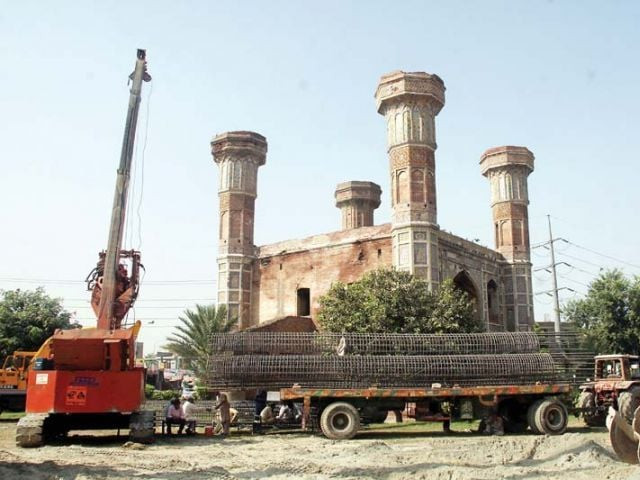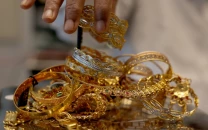Orange Line ‘not at the cost of heritage sites’
High Court issues short order to discontinue work within 200 feet of historical sites

A file photo of Chauburji in Lahore. PHOTO: ABID NAWAZ/EXPRESS
The order is in line with Section 22 of the Antiquities Act, 1975, which says, “No development plan or scheme or new construction on, or within a distance of 200 feet of, a protected immovable antiquity shall be undertaken or executed.”
Justice Abid Aziz Sheikh and Justice Shahid Karim had adjourned the hearing until February 4.
In a similar case, the LHC had ordered the provincial government in April 2015 to stop work on a signal-free corridor in Lahore. The Supreme Court had later set aside the LHC order giving a green signal to the project.
Instead of availing services of the advocate general, the government has hired a private lawyer on a hefty fee to defend the metro train project.
Civil society representatives have praised the LHC for staying work on the project. They have also called for the implementation of Section 23 of the Antiquities Act to restore the beauty of the heritage sites.
Section 23 states: “No person shall put any neon signs or other kinds of advertisement, including bill posting, commercial signs, poles or pylons, electricity or telephone cables and television aerials, on or near any protected immovable antiquity. Whoever contravenes this provision, shall be punishable with rigorous imprisonment for a term which may extend to one year, or with fine which may extend to Rs10,000, or with both.”
As many as 11 historical buildings along the route have been identified in the petition. These include Chauburji, St Andrew’s Church, the GPO building, the Supreme Court Lahore Registry, Shalimar Gardens, the tomb of Mehrunnisa, Budhu ka Awa, the tomb of Mauj Darya Bukhari and the Shah Cheragh building.
The court had earlier asked Khwaja Harris, the counsel for the government, about the steps the government had taken to preserve historical buildings along the route. The court had asked if the government had obtained clearance from the departments concerned before launching the project. Harris was unable to satisfy the court on these counts.
Published in The Express Tribune, February 1st, 2016.



















COMMENTS
Comments are moderated and generally will be posted if they are on-topic and not abusive.
For more information, please see our Comments FAQ